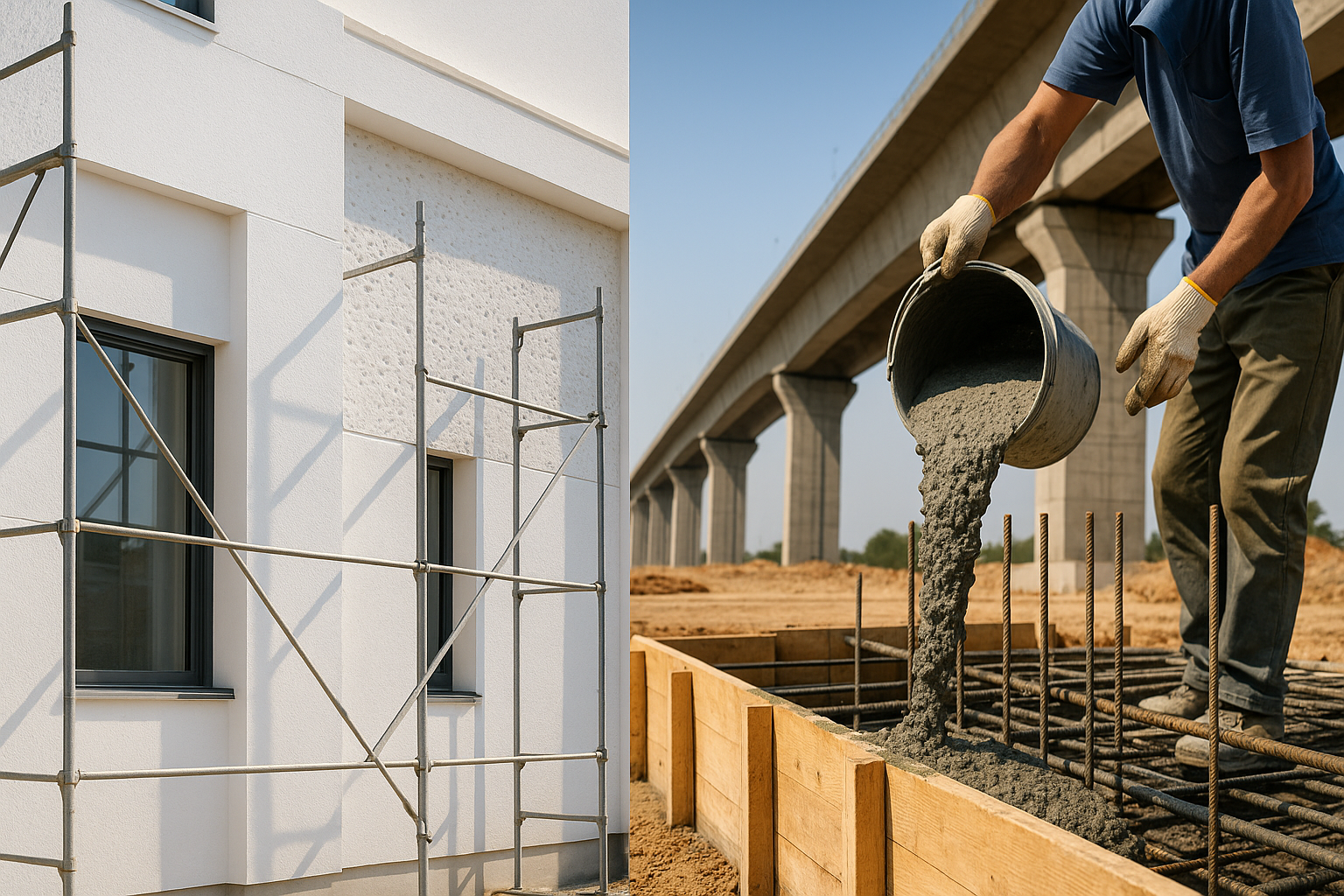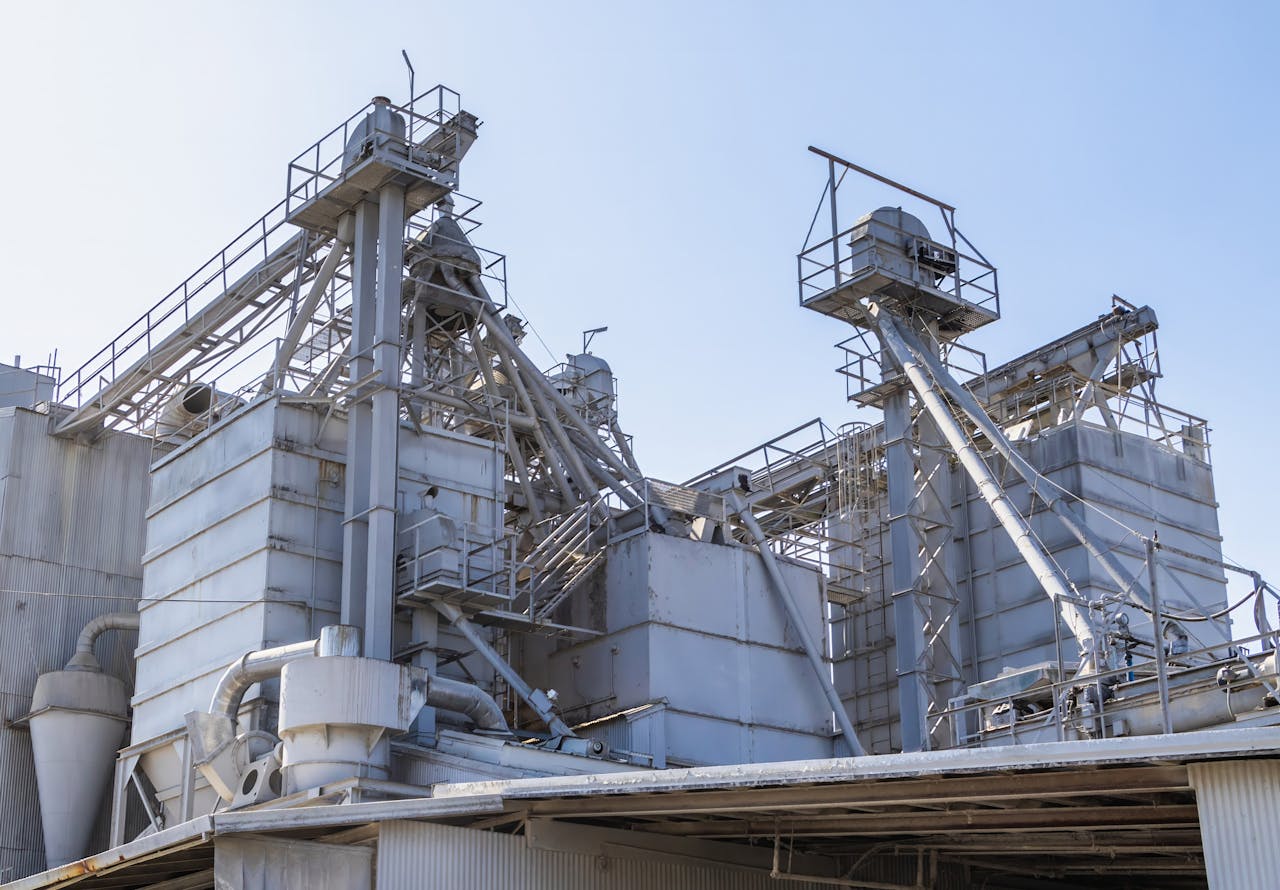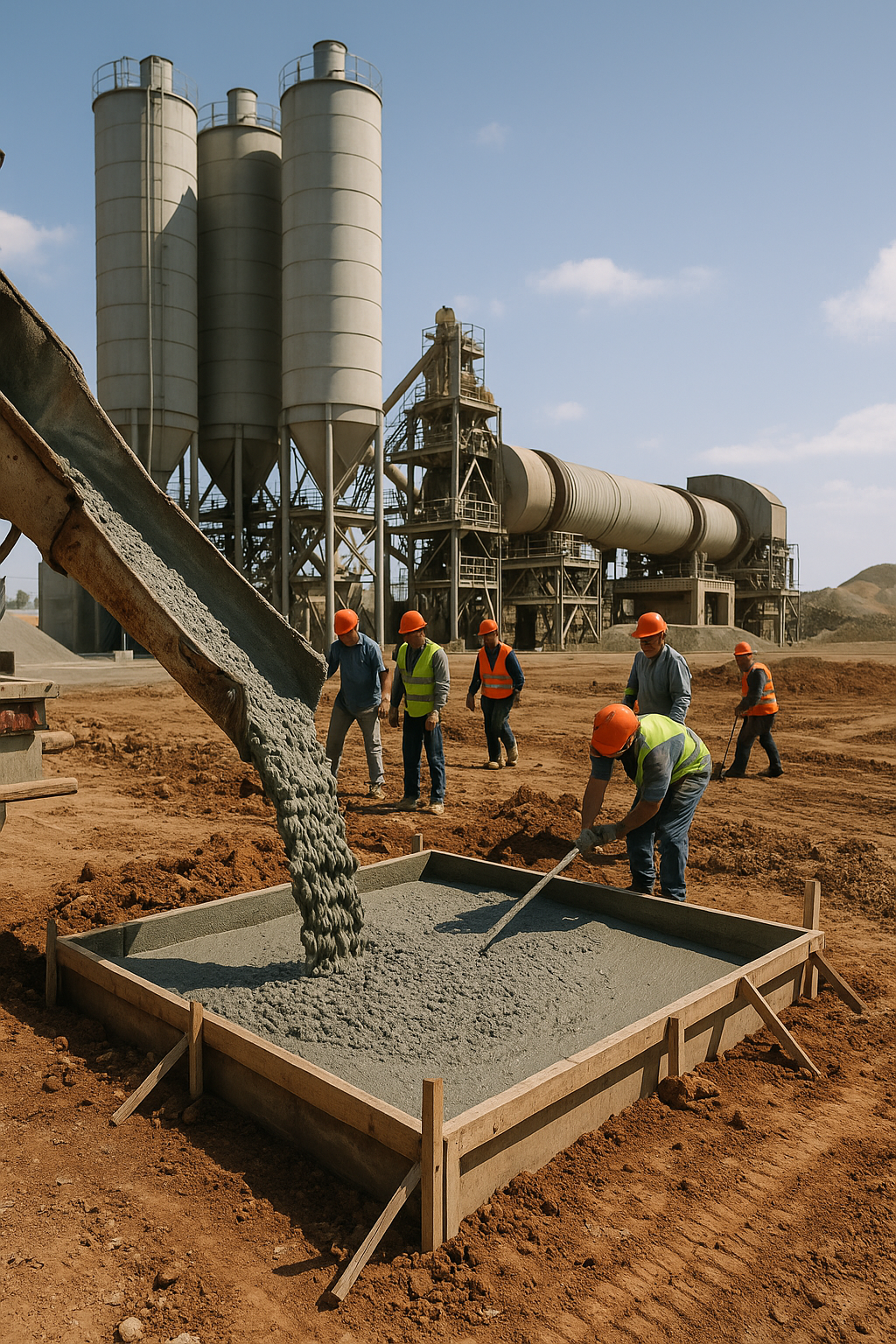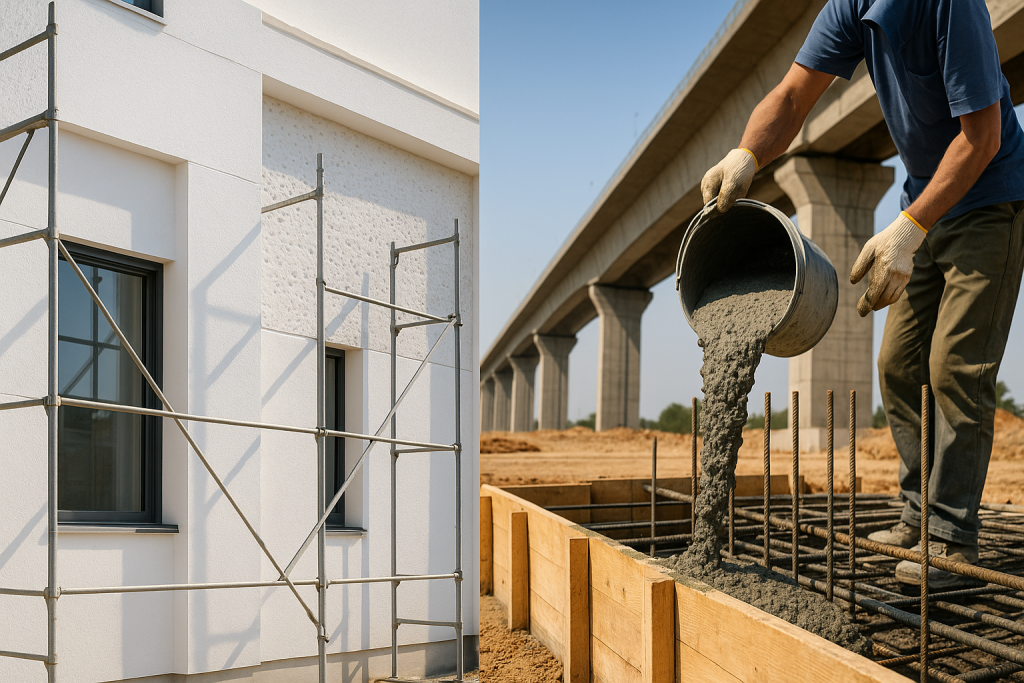
White cement vs grey cement is one of the most common comparisons in the construction industry. Understanding white cement vs grey cement is essential for making the right material choice for your project. While they may look similar in terms of composition, the differences in raw materials, cost, usage, and aesthetics can significantly affect your project’s outcome. Whether you’re building a high-rise, working on decorative architecture, or exporting cement to GCC markets, knowing these differences is crucial.
Related: Read Our Ultimate Guide to Cement Types
What Is White Cement?
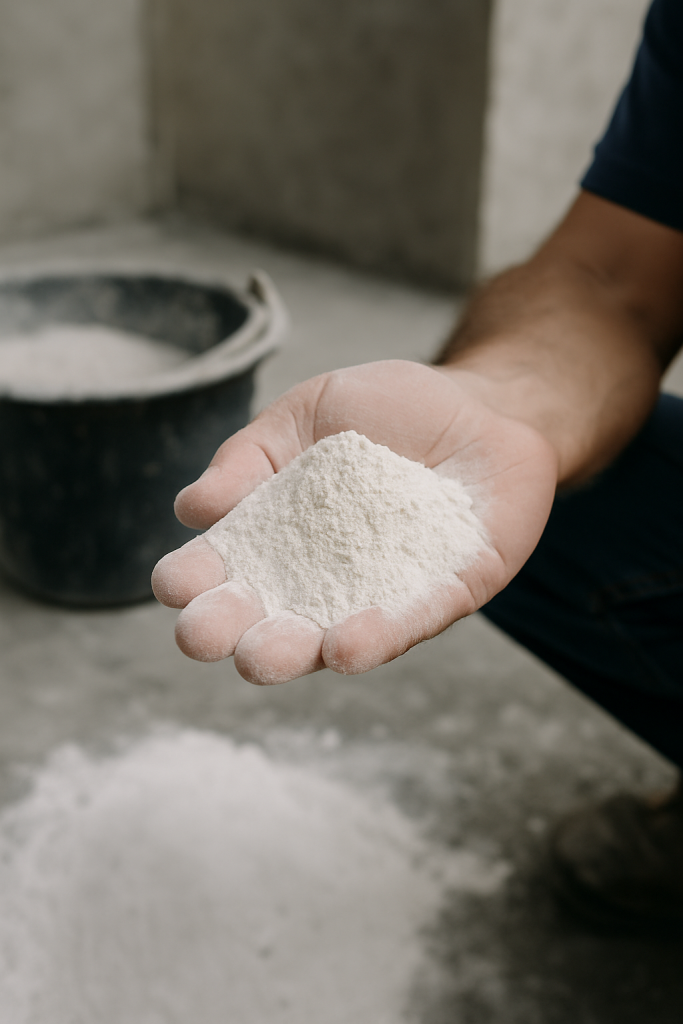
White cement is a refined type of Portland cement manufactured from raw materials low in iron and manganese. This results in its bright white color, which makes it ideal for decorative applications. In decorative construction, the white cement vs grey cement decision often comes down to the desired brightness and finish.
Best For:
- Decorative concrete and finishes
- Precast cladding panels
- White or colored grout and tiles
- Landscaping and artistic elements
What Is Grey Cement?
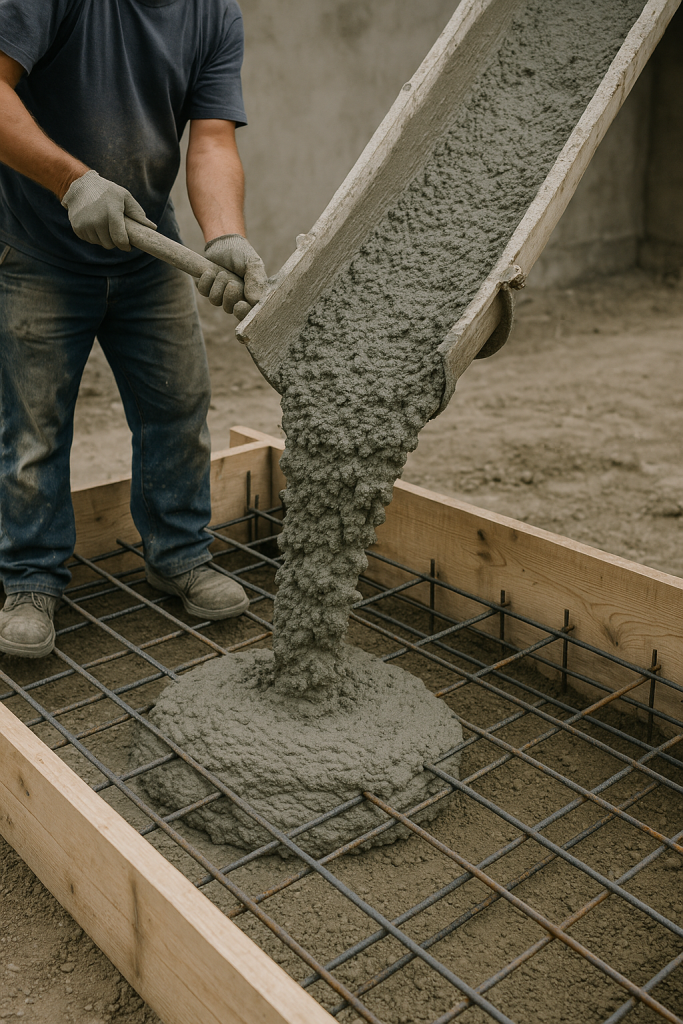
In the white cement vs grey cement comparison, grey cement is the standard choice for structural work. Grey cement, also known as ordinary Portland cement (OPC), is the standard binder used in most structural construction. Its grey color comes from higher iron and manganese content in its raw materials.
Best For:
- Foundations and slabs
- Bridges, dams, and highways
- General-purpose construction
7 Key Differences Between White Cement and Grey Cement
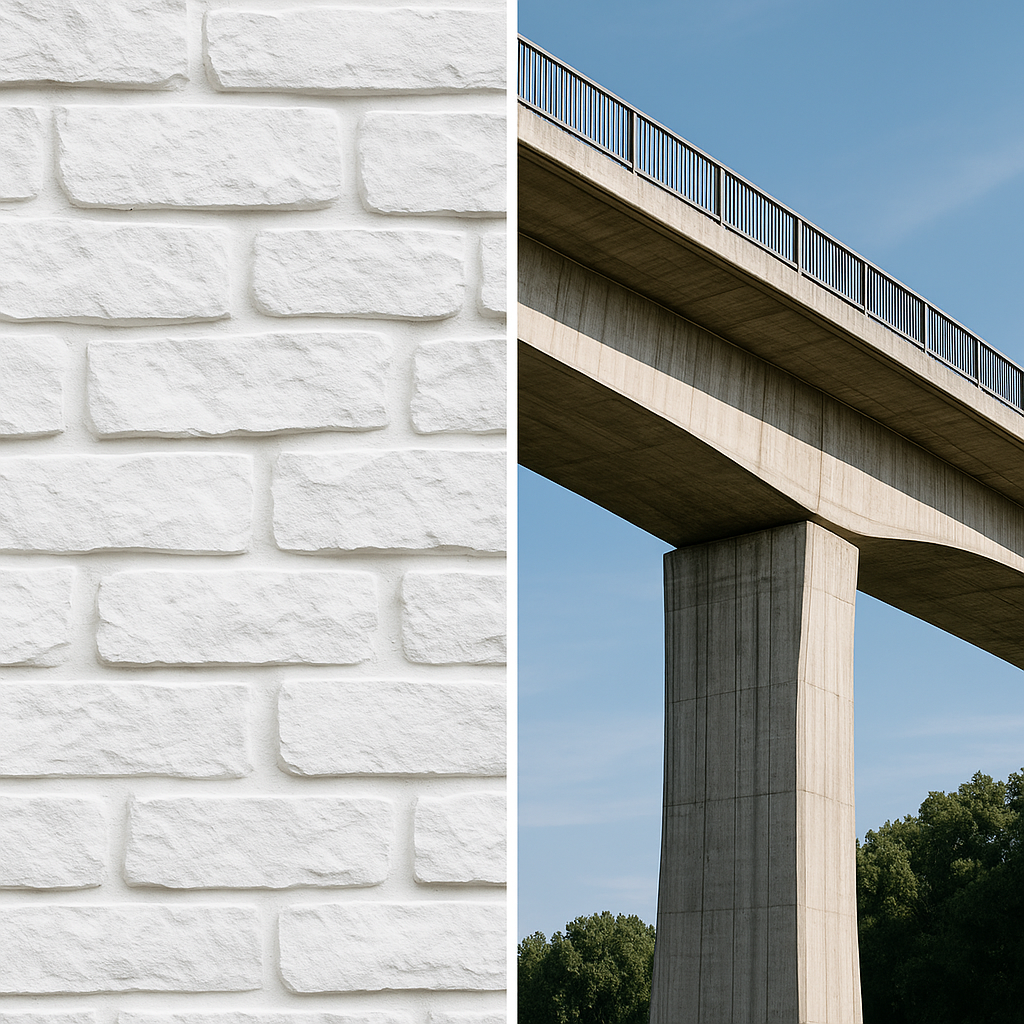
| Factor | White Cement | Grey Cement |
|---|---|---|
| Color | Bright white finish | Standard grey |
| Raw Materials | Low iron & manganese | Higher iron & manganese |
| Cost | Higher due to processing | Lower cost |
| Strength | Similar compressive strength | Similar compressive strength |
| Uses | Decorative, architectural | Structural, general |
| Setting Time | Slightly longer | Standard |
| Availability | Limited supply in some regions | Widely available |
Cost Comparison for GCC and Global Markets
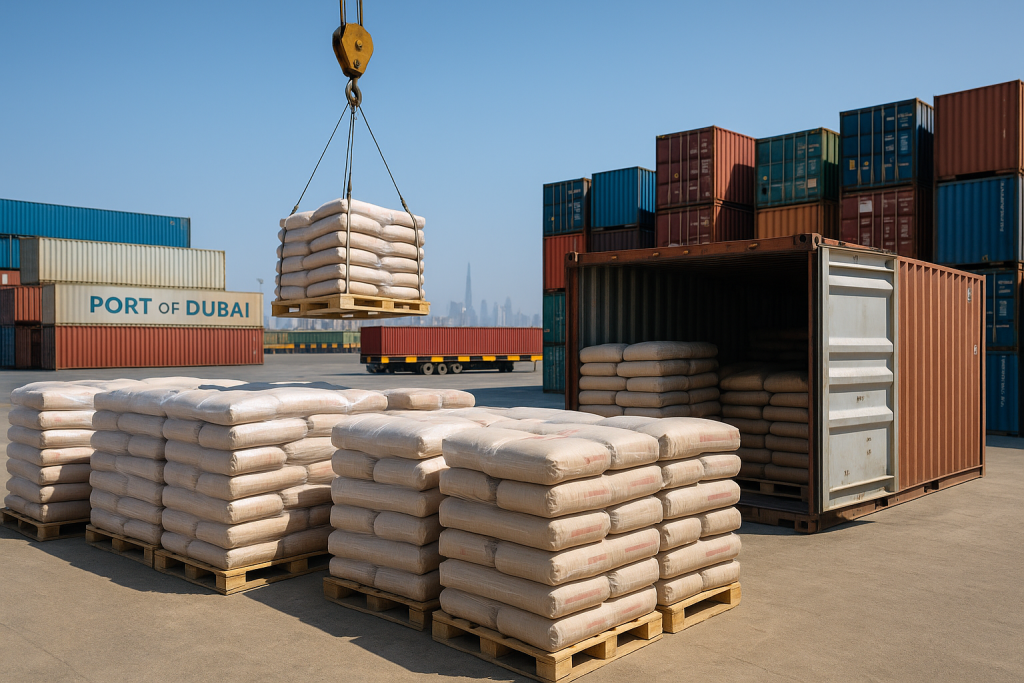
In GCC countries, white cement vs grey cement pricing can differ by as much as 200–300%. In GCC countries, white cement can cost two to three times more than grey cement due to higher production costs and limited supply. However, in luxury residential and commercial projects, the use of white cement can significantly increase property value and aesthetics.
💡 Market Insight: According to Global Cement Market Reports, the demand for white cement in the UAE and Qatar is rising, driven by high-end developments and infrastructure projects ahead of major events like Expo and World Cup preparations.
When to Use White Cement vs Grey Cement
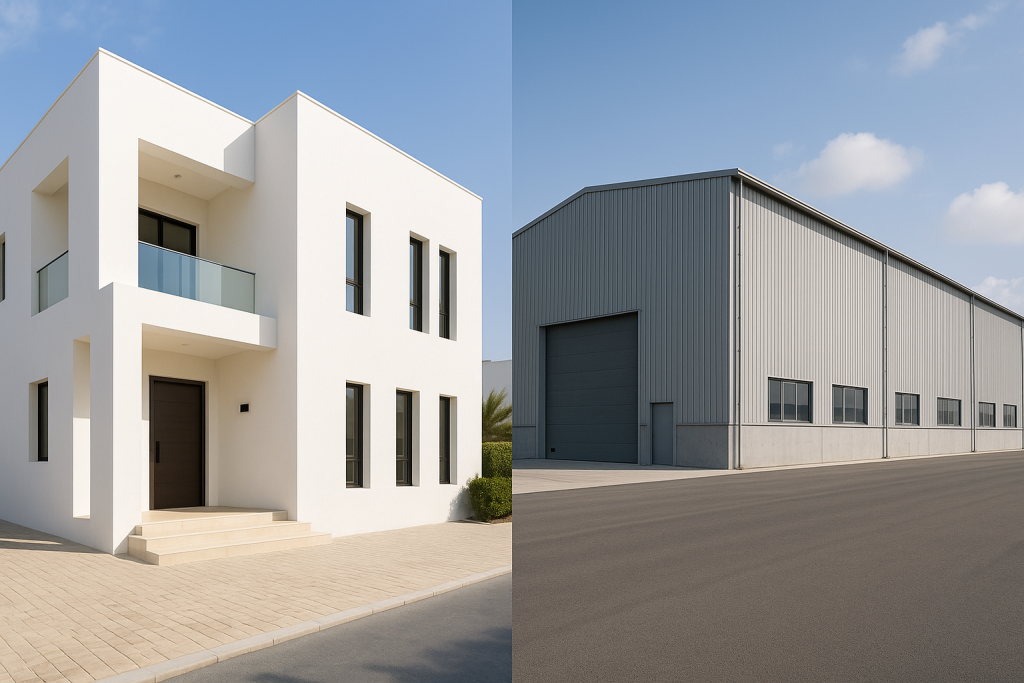
Choose White Cement If:
- Aesthetic appeal is a priority
- You’re working on exposed concrete surfaces
- You want a bright base for colored finishes
Choose Grey Cement If:
- You need cost-effective structural strength
- You’re working on large infrastructure projects
- Speed and wide availability are essential
Environmental and Sustainability Factors
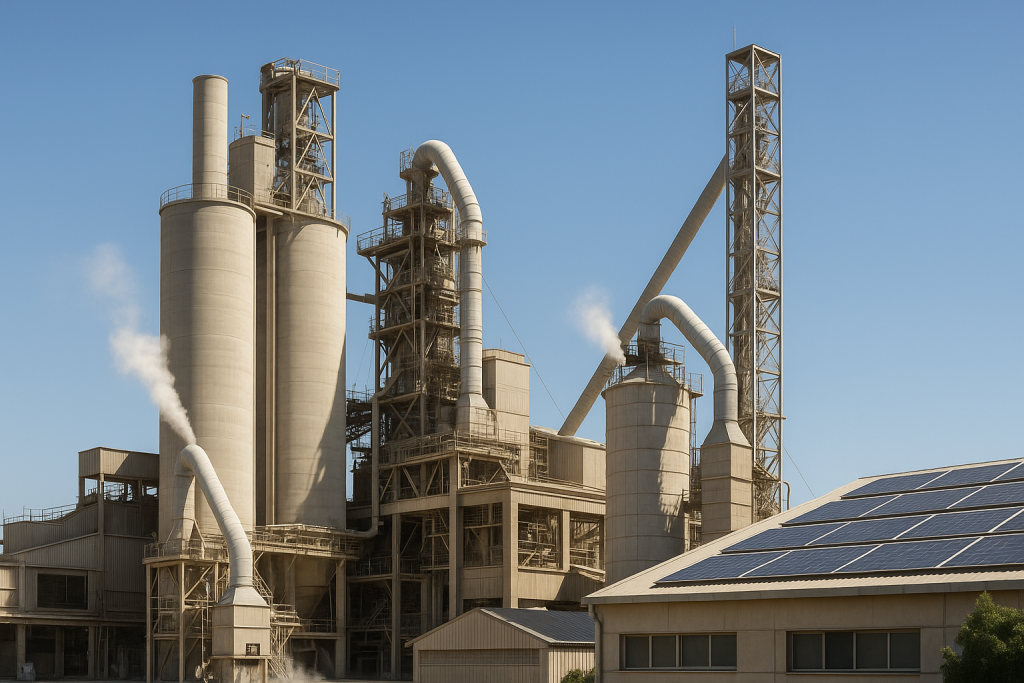
While both cement types produce CO₂ emissions during manufacturing, white cement generally requires a more energy-intensive process because of its higher firing temperature. However, due to its aesthetic properties, it can reduce the need for paint or coatings, potentially lowering lifecycle costs. Many green building specialists now evaluate white cement vs grey cement based on lifecycle environmental impact.
Common Mistakes When Choosing Cement Type
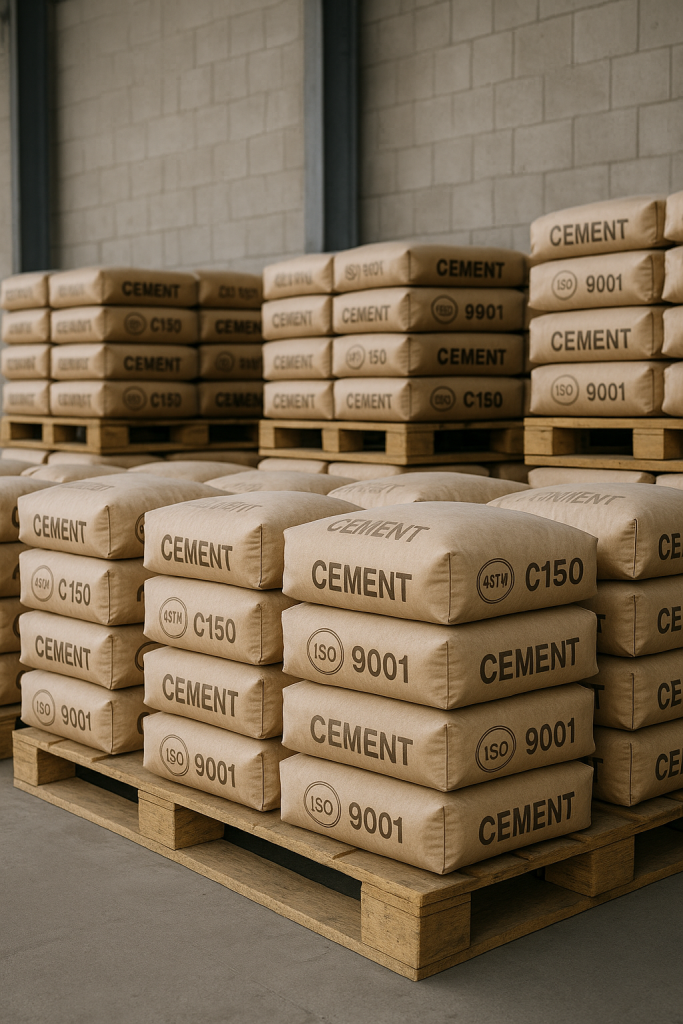
Using white cement for hidden structural work – It’s costly and unnecessary.
Skipping pigment when using grey cement for exposed surfaces – The finish will appear dull.
Not checking international standards – Always verify compliance with ASTM C150 or EN 197 before ordering.
Karbin Cement’s White and Grey Cement Supply
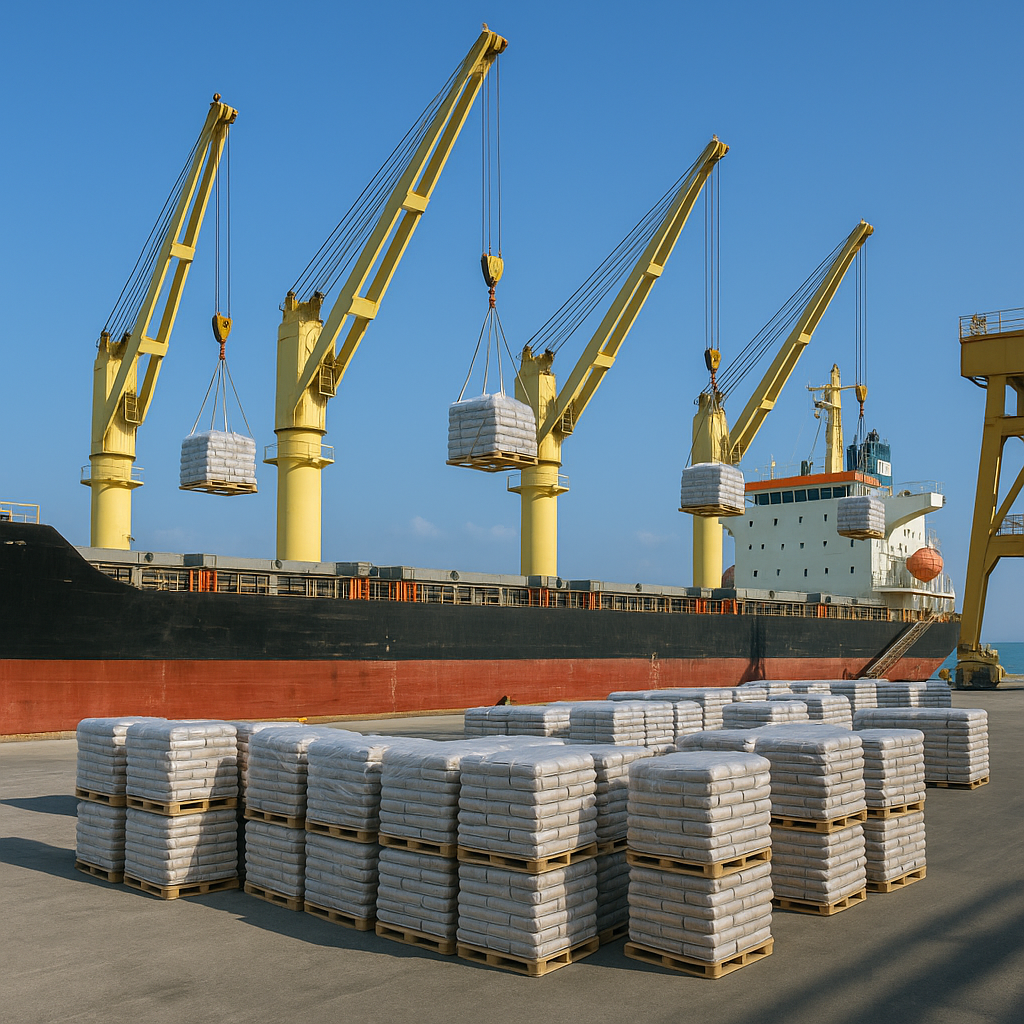
At Karbin Cement, we produce and export both white and grey cement, meeting ASTM and ISO standards. From our strategic location in the Chabahar Free Zone, Iran, we offer fast, cost-effective shipping to GCC, Africa, and Asia.
FAQ
Q1: Is white cement stronger than grey cement?
No, both have similar compressive strength. The difference lies in color and cost. The white cement vs grey cement choice depends on both function and design goals.
Q2: Can I use grey cement for decorative work?
Yes, but you may need pigments or coatings to match white cement’s brightness.
Q3: Which is better for export?
It depends on market demand — white cement is preferred for luxury projects, while grey cement dominates general construction.
Conclusion
When deciding between white cement vs grey cement, think about your project’s priorities. White cement is unbeatable for aesthetics and design-driven work, while grey cement is the go-to for structural strength and affordability. For exporters, offering both options ensures you meet diverse client needs.
Need advice or a custom export quote?
Get a Quote Today
